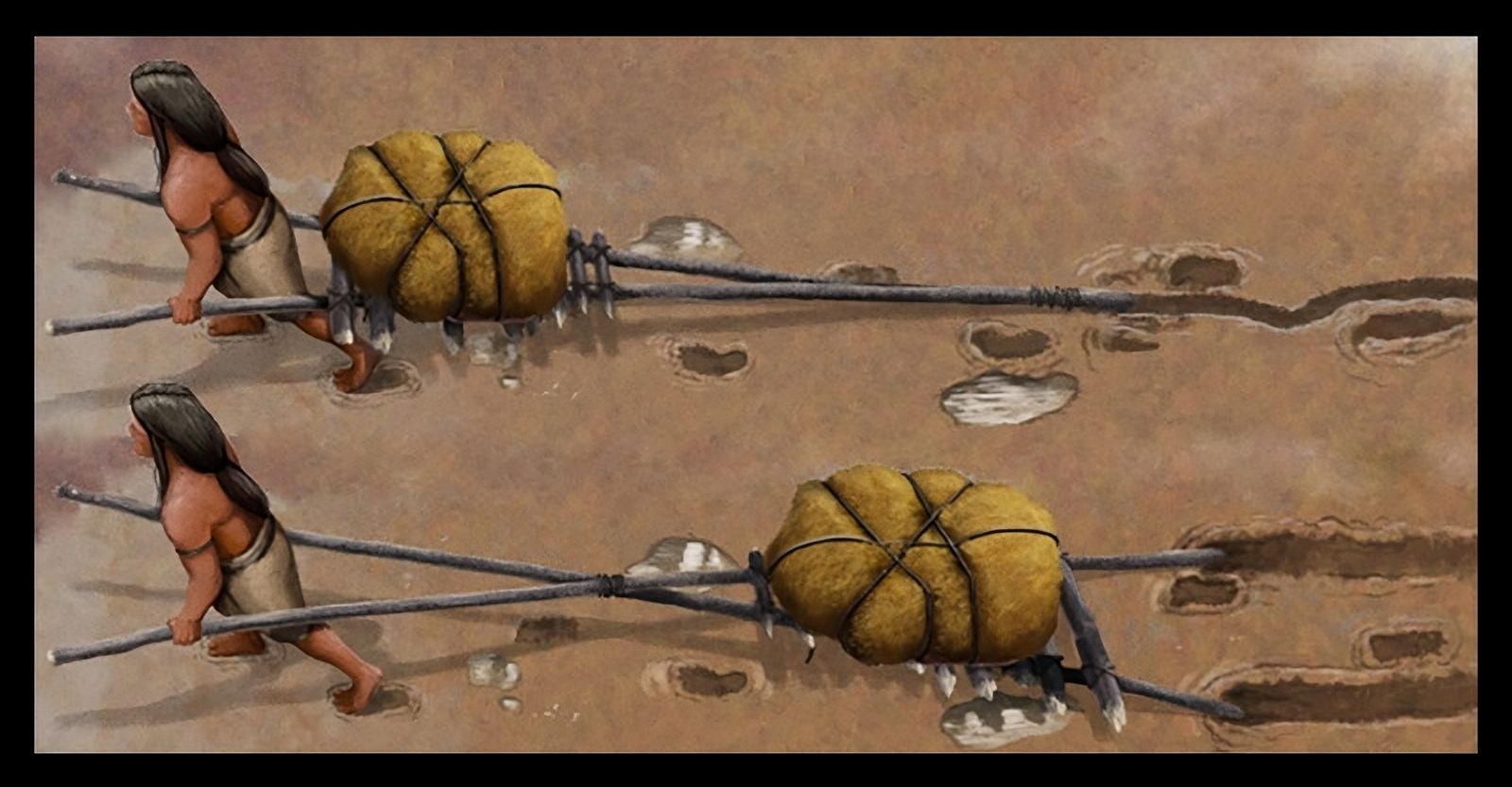Discovery of a 22,000-year-old transportation technology 🧐
Published by Cédric,
Article author: Cédric DEPOND
Source: Quaternary Science Advances
Other Languages: FR, DE, ES, PT
Article author: Cédric DEPOND
Source: Quaternary Science Advances
Other Languages: FR, DE, ES, PT
Follow us on Google News (click on ☆)

These traces, discovered in White Sands National Park, New Mexico, testify to the ingenuity of these populations and their ability to adapt to their environment. They open new perspectives on the history of human migrations and the evolution of transportation techniques.
Intriguing traces offering a glimpse into daily life
A team from Bournemouth University discovered a series of drag marks, likely caused by makeshift vehicles made of wooden poles, alongside ancient human footprints in White Sands National Park, New Mexico. These marks, dating back approximately 22,000 years, demonstrate surprising ingenuity.
These fossilized traces suggest that the earliest Americans used travois, a type of rudimentary sled, to transport their belongings. The presence of footprints, including those of children, near the drag marks suggests that these travois were pulled by humans, not animals.
Experimental validation and implications of the discovery
To validate their theory, researchers reconstructed simple travois with wooden poles and dragged them across mudflats. The marks created showed striking similarities to the fossilized traces, reinforcing the idea that the latter were left by travois.
This discovery pushes back the date of the earliest known evidence of transportation by over 10,000 years, which until now dated back to cave paintings and modifications of animal hooves and paws. It testifies to the adaptability and innovation of our ancestors.
A valuable testimony to the lives of the earliest Americans
The drag marks at White Sands offer a unique testimony to the lives of the earliest inhabitants of the Americas. They provide a better understanding of their movements, activities, and interactions with their environment.
This study benefited from the collaboration of indigenous populations, whose interpretations enriched the understanding of the drag marks. This collaboration highlights the importance of considering traditional knowledge in archaeological research.
Each discovery at White Sands contributes to reconstructing the history of the earliest settlements in the Americas. These researches are essential for understanding humanity's past and the migrations that shaped our world.
To go further: What is a travois?
The travois is a rudimentary yet ingenious means of transportation that has been used by many cultures around the world, particularly by indigenous populations in North America. It is a type of sled consisting of two long wooden poles, connected at one end and dragging on the ground at the other. A platform or net is fixed between the poles to support the load to be transported. The travois can be pulled by a person, an animal (dog, horse, etc.), or a combination of both.
The travois is particularly suited to rough terrain and areas where wheels cannot be used effectively. It is relatively easy to build with materials available in the environment, making it a valuable tool for nomadic or semi-nomadic populations. Travois have been used to transport a wide variety of loads, ranging from personal belongings to construction materials, as well as game and provisions. They have played an essential role in the daily life and movements of many communities throughout history.